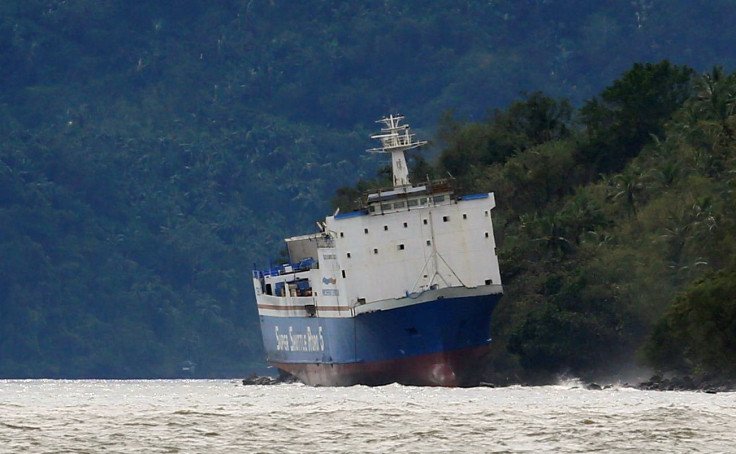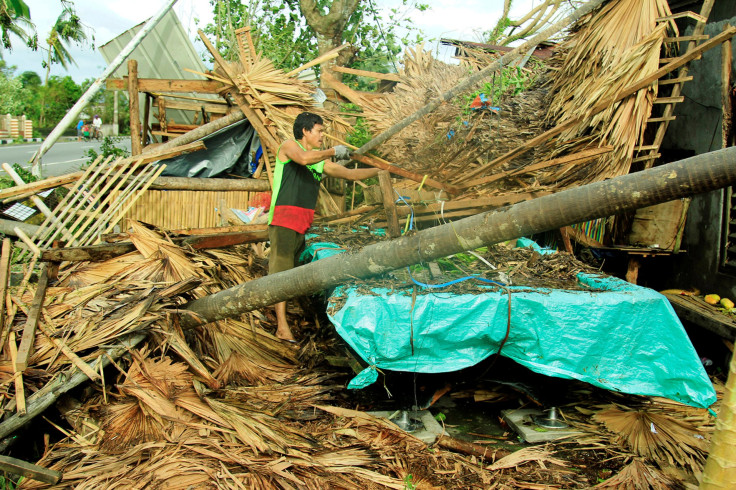Philippines Typhoon Nina Death Toll And Pictures: Christmas Day Nock-Ten Storm Ravages Homes, Causes Flooding [PHOTOS]

A powerful typhoon swept through the Philippines on Christmas Day, forcing thousands of residents from their homes and claiming at least four lives in the majority Christian nation. Typhoon Nock-ten, known in the Philippines as typhoon Nina, began pummeling the eastern province of Catanduanes at around 8 p.m. local time.
Trees were uprooted from the ground, power and telecommunications lines were shut down and roughly 200,000 residents were forced to wait out the storm at evacuation centers instead of spending the major Christian holiday with family and friends. Dozens of domestic and international flights were canceled.
As #Nockten makes its way through the Philippines, @philredcross is helping thousands who fled the typhoon's path #NinaPH pic.twitter.com/zcX1ABmD5j
— Australian Red Cross (@RedCrossAU) December 26, 2016
Typhoon Nina brings strong winds and heavy rain to Philippines on Christmas https://t.co/tYUNBcaiCq pic.twitter.com/sllRZqvVP2
— Global Issues Web (@globalissuesweb) December 25, 2016
On Christmas Day, evacuation ordered in Philippines as Typhoon Nock-ten approaches https://t.co/DCF2sq3AUG (AFP pic) pic.twitter.com/73kfykradO
— China Xinhua News (@XHNews) December 25, 2016
"Even if it weakens, 150km/h winds are still very strong," said Tess Bayombong, program director of CARE in the Philippines, an aid agency, before the storm reached Manila, home to about 13 million people. "And things may still change for the worse."
A farmer in Quezon province was killed after being pinned by a fallen tree. Meanwhile, three other villagers, including a couple, were killed in a flash flood in Albay province.
"We continue to pray, stay positive and stay alert. Brownout in a lot of areas already," Camarines Sur Gov. Miguel Luis Villafuerte said in a post on his Instagram account.
NASA said the storm had been at "super typhoon" strength, but weakened after moving over southern Luzon. By Monday, many were assessing the damage and returning home, even as Manila waited to see if the storm would hit the capital.
"They have left the evacuation centers and we're seeing the sun again," said Ann Ongjoco, mayor of Guinobatan town in Albay province, one of five provinces that lost electricity. "Many houses made of light materials were destroyed."
Meteorologist Philip Klotzbach at Colorado State University estimated it was the strongest typhoon the Philippines had seen on record. More than 6000 people were killed and 200,000 homes destroyed in 2013 after Typhoon Haiyan, the strongest-ever storm to hit the Philippines, left paths of destruction in the central islands of Leyte and Samar. The Philippines sees about 20 major typhoons each year and Christmas storms are not unprecedented. Since 1948, at least seven have struck the island nation during the Christmas holiday.
Manila's civil defense office warned that the capital could be hit Monday by "heavy to intense rains, flash floods and severe winds." "Our local disaster councils are on red alert," said Mina Marasigan, spokeswoman of the country's disaster monitoring council. "We have pre-positioned relief supplies and rescue and (road) clearing equipment in Metro Manila," she added.


© Copyright IBTimes 2024. All rights reserved.












